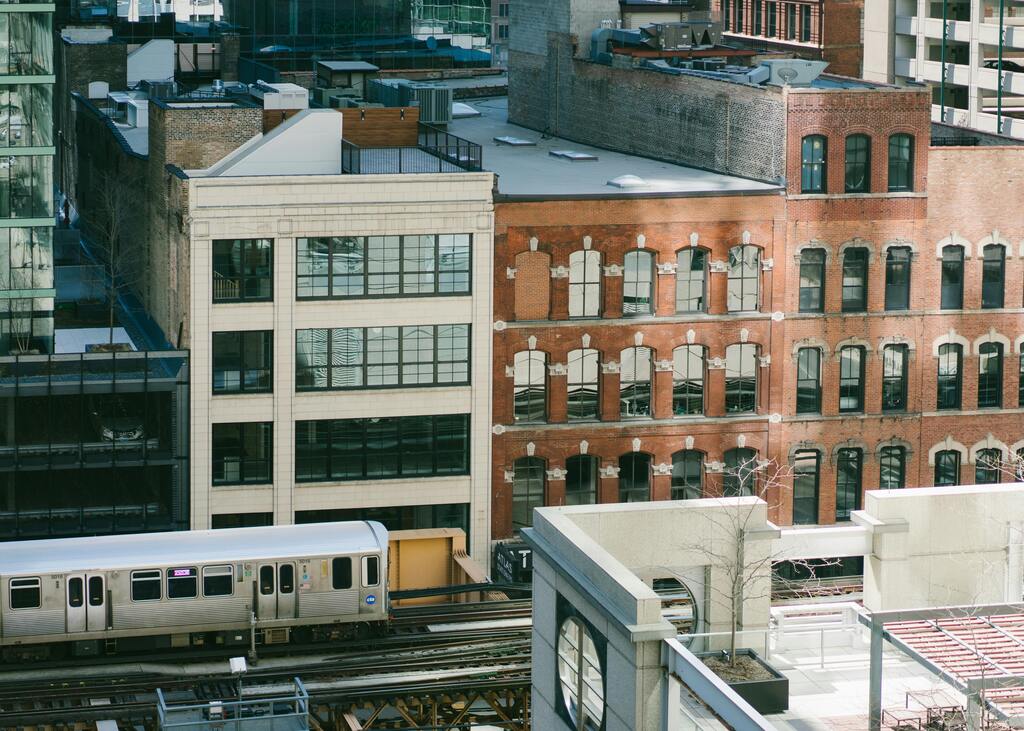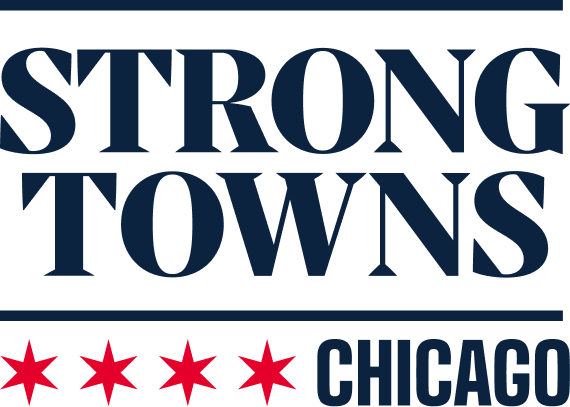
The Beating Heart of it All: Turbocharging the Loop’s Growth Through Smart Planning
What’s Chicago’s fastest-growing neighborhood? Here’s a hint: its population spikes at 9 AM every weekday and declines at 5 PM. Although it’s long been defined by its towering office blocks, people are rapidly making the Loop their 24/7 home. From 2020 to 2023, the Loop grew by 9% to 46,000. This is up from around 12,000 residents in 1990. More impressive yet: this makes Chicago’s downtown the fastest growing in the country.
Since March 2020, the Loop has been no stranger to negative press, with many lamenting high vacancies, rising crime, and decline in foot traffic as the precipice of a doom loop that threatens to sink the whole city. However, a deeper analysis reveals a place ripe for a positive, residential-powered transformation. To capitalize on the Loop’s evolving potential, city leaders across the public and private sectors should make downtown more walkable and lean into the benefits of its density.
The Loop’s neighborhood-ification is not slowing down. Occupancy rates for residential units were at 95% in 2022 and the Chicago Loop Alliance, downtown’s chamber of commerce, projects that the neighborhood will grow a further 17% by 2028. For reference, from 2010 to 2020, both West Loop and River North grew by around 50% and South Loop grew by about 30%. This indicates that the Loop may be on the precipice of the dramatic growth that has redefined the rest of downtown.
If the Loop is becoming a true neighborhood, who are the neighbors? On average, high-earning young professionals. According to a survey conducted by the Chicago Loop Alliance, 63% of residents earn $100,000 or more a year, with 25% earning more than $200,000. 82% have a bachelor’s degree and 42% hold a master’s or doctorate. Most are also not from Chicago, with only 30% born in Illinois and 28% born outside the country. The Loop also leans young with a median age of 32.6.
Although this transformation has flown under the radar for many, businesses are taking note of the abundance of highly qualified talent at the city’s center. For instance, Google plans to bring 1,000 new employees to its new Thompson Center headquarters, partly driven by its desire to be near a growing center of highly-educated talent.
We hear a great deal about the Loop’s woes, with only 55% of workers returning to the office and 85% hotel occupancy compared to pre-pandemic. Luckily, the Loop’s growing residential population presents an opportunity to transform the neighborhood into some where that attracts workers, visitors, and even more residents.
To spark this growth, the city should redesign the Loop to embrace what has appealed to residents. Among residents, the most cited reason for living in the Loop is its walkability, followed by proximity to their place of work and various amenities. 78% of residents cite walking as their primary mode of transportation. Perhaps more than any other neighborhood in the city, the Loop’s future is grounded in walkability.
The city should take several steps to accelerate this transformation. Introducing a congestion fee downtown would be a positive step towards creating more space for people. The city could also take inspiration from New York City’s Plaza Program, which has transformed once-busy streets in Manhattan into plazas.
These developments, such as Herald Square Plaza, have increased downtown vibrancy by creating spaces where people can be with each other. Establishing these plazas throughout Midtown Manhattan saw an 11% increase in pedestrian volume and 74% of users reported that the project had improved the streets dramatically. These initiatives make these spaces more pleasant and there is little evidence to suggest there is a trade-off in deterring commuters. In fact, New York has had a stronger post-COVID recovery, with a 72% return to office rate compared to Chicago’s 55%.
Another way to increase the Loop’s vibrancy is renovating underpopulated office buildings into mixed-use units. The city government is progressing on this front through the LaSalle Street Reimagined project. Already, around $200 million in TIF funding has been approved to convert 30 N Lasalle Street and 79 W Monroe Street, once solely office buildings, into buildings that have apartments, shops, and office spaces.
Increasing the number of people in the Loop every hour of the day will make it easier for retail locations to thrive. This is particularly pressing since almost a third of all retail locations in the Loop are vacant, exacerbating a sense of decline. Making it easier for experimental pop-up shops, such as art installations or test restaurants, to operate in these spaces would create an intermediate step between vacancy and establishing long-term tenets. The city government should make it easier for these sorts of initiatives to get leases.
Related to this, retailers should be allowed to establish amenities that appeal to a growing population. For instance, one of the most frequently cited amenities desired by residents are grocery stores, which are currently scarce. A lack of stores like these may be what is causing residents to discount the Loop as a long-term home, with 54% of residents saying they plan on moving out in within five years. Although this is not necessarily a bad thing, making the Loop somewhere people feel comfortable setting down roots will enhance its vitality in the long-run.
Currently, the Loop leans young, with 47% of residents between 20 and 35. Accordingly, only 15% of residents have children. If the Loop wants to retain its population, it will have to develop amenities that are useful for growing families.
Finally, the Loop should focus on placemaking strategies to create more dynamic streetscapes, green areas, and culture. These amenities were highly cited as potential sources for improvement among Loop residents and would make the neighborhood more attractive to visitors as well. Towards this end, the Loop should utilize its pre-existing cultural institutions and iconic architecture.
Recently, Detroit was able to rejuvenate its downtown through a similar strategy. Major corporations, non-profit organizations, and the local government invested in several programs in and around the city’s downtown cultural centers. These included public art, events and festivals, and placemaking through enhancing public spaces. These initiatives have helped the city’s downtown revitalize, with the number of downtown apartments doubling since 2010.
The Chicago Loop Alliance’s summertime Sundays on State are a strong example of how to engage citizens and give performers and small business owners an opportunity to show the city what they have to offer. Chicagoans should think creatively about how to best leverage what already exist downtown and what sorts of events and infrastructure can bring people together the best.
Beyond these occasional cultural productions, improving the Loop’s streets for day-to-day use would vastly increase their appeal. For instance, in Montreal, the city recently installed public outdoor spaces with free WiFi so office workers could take calls outdoors. This would especially appeal to Loop residents, who are disproportionately likely to work white-collar jobs. Even small touches, like establishing more trees or greenery and improving nighttime lighting would go a long way in increasing livability.
The Loop’s eclectic collection of skyscrapers from different eras and architectural styles is a testament to its ability to reinvent itself following how society has transformed over the decades. The emergence of a residential Loop is another chapter in that story. Should city leader’s capitalize on it fully, it promises to transform our city’s downtown into the most resilient it’s ever been.
